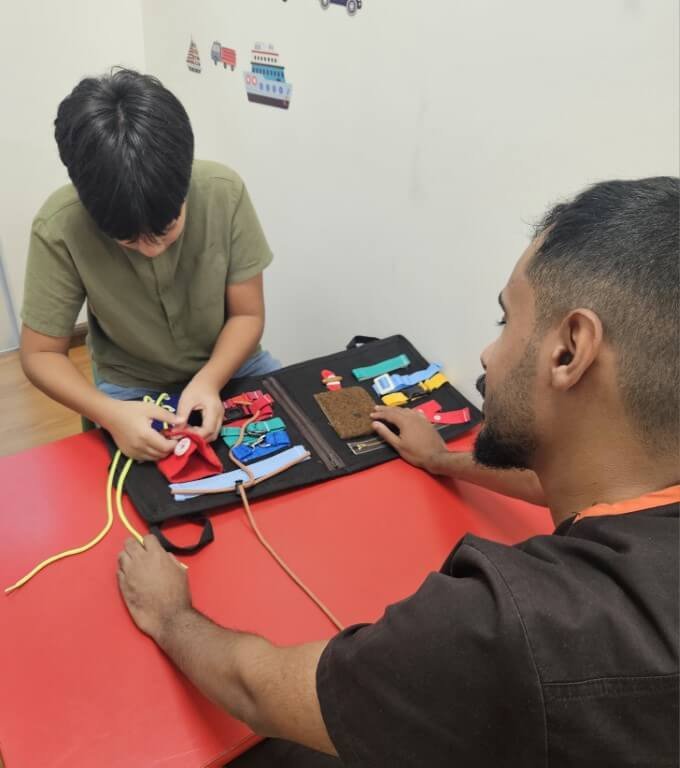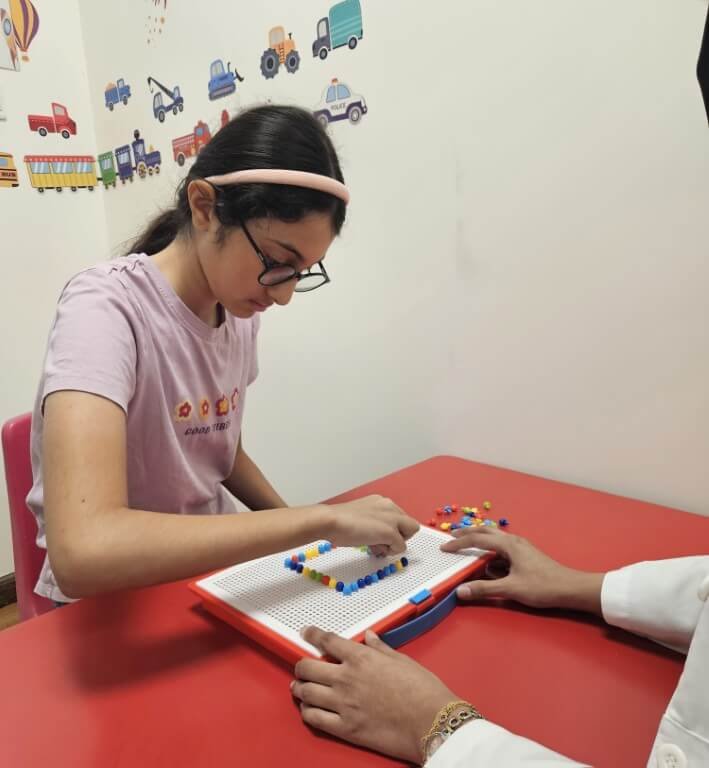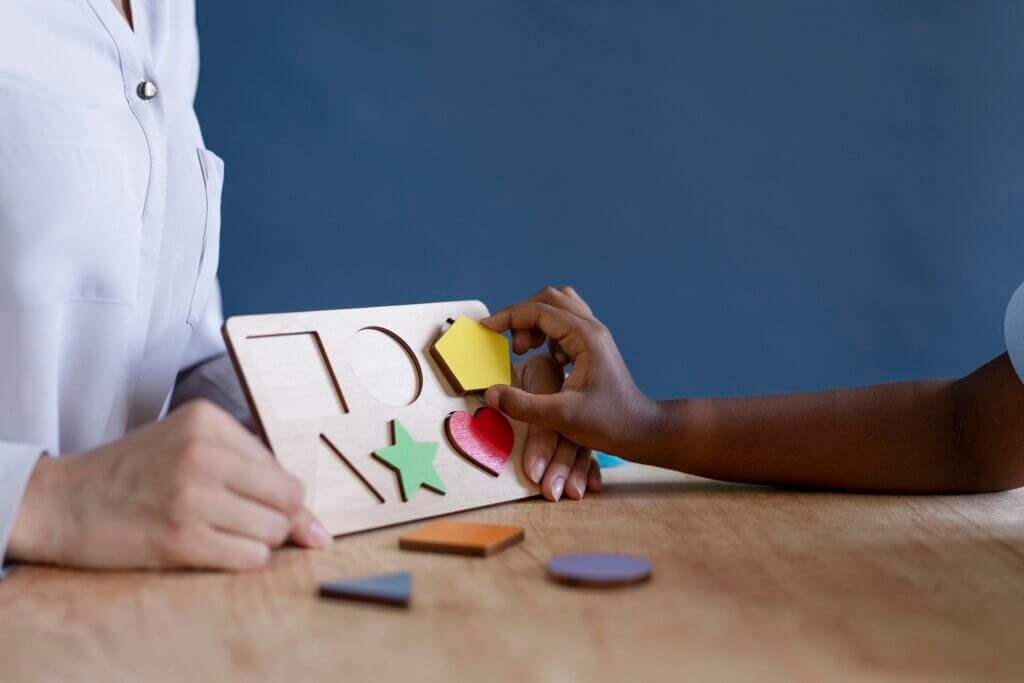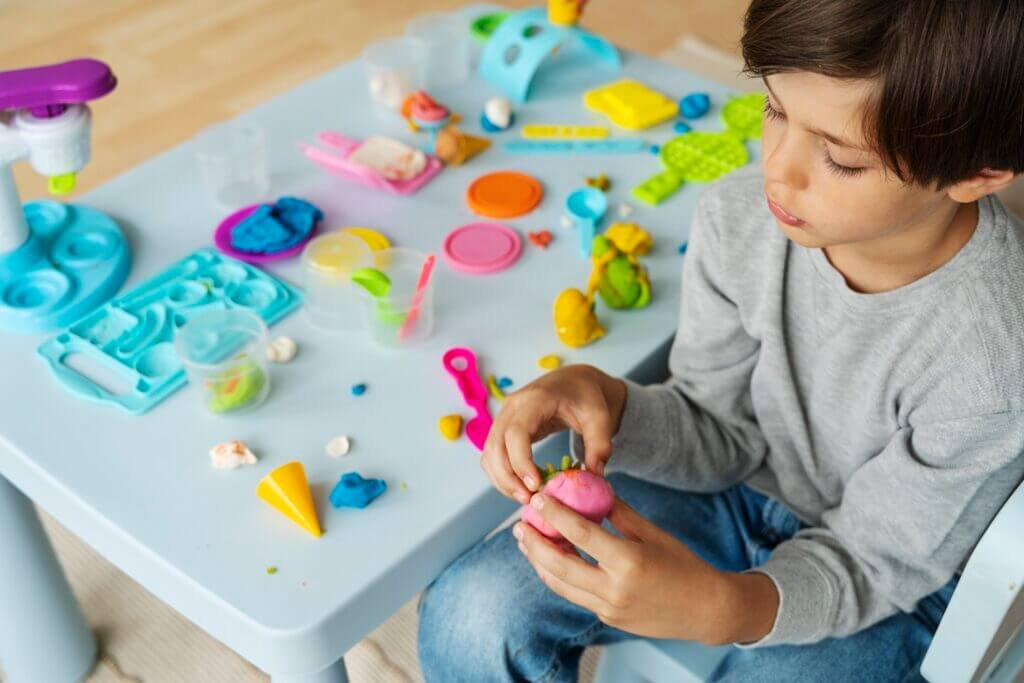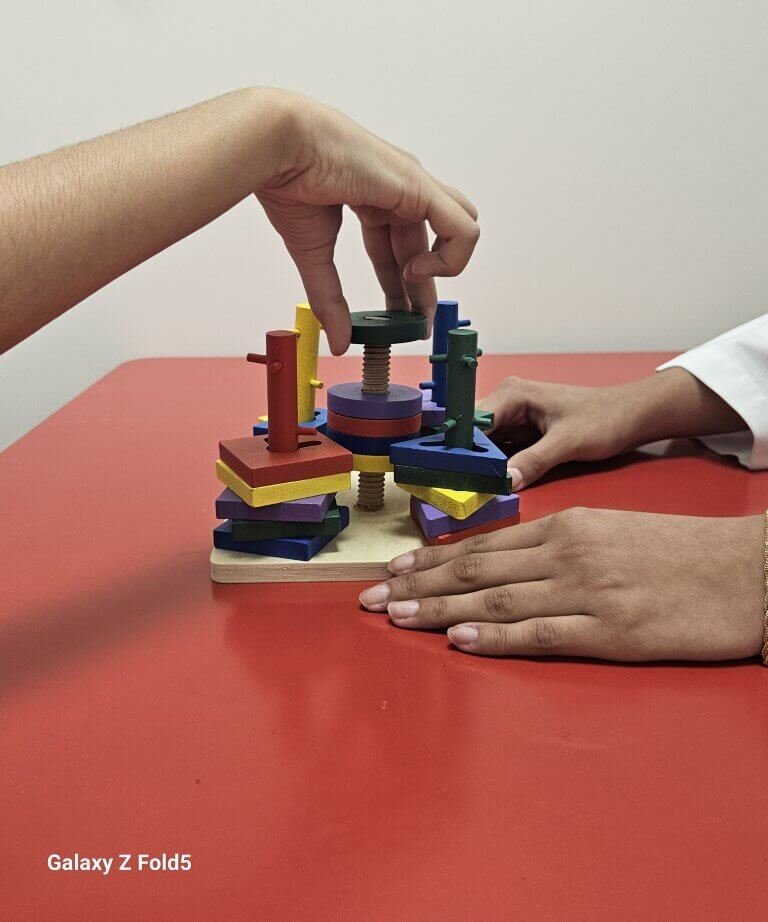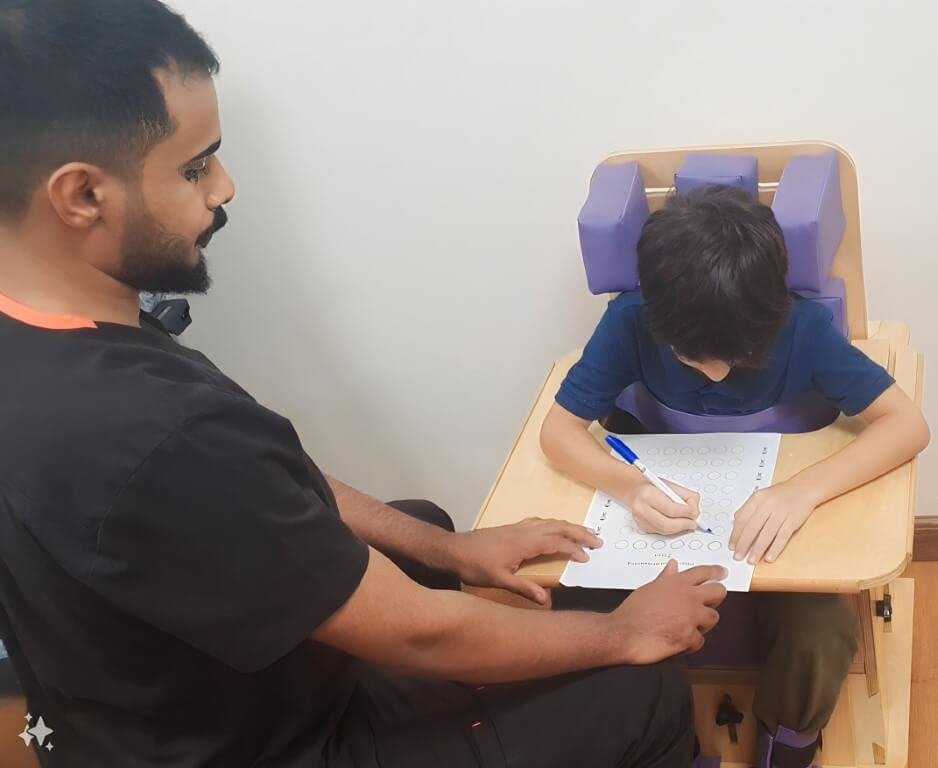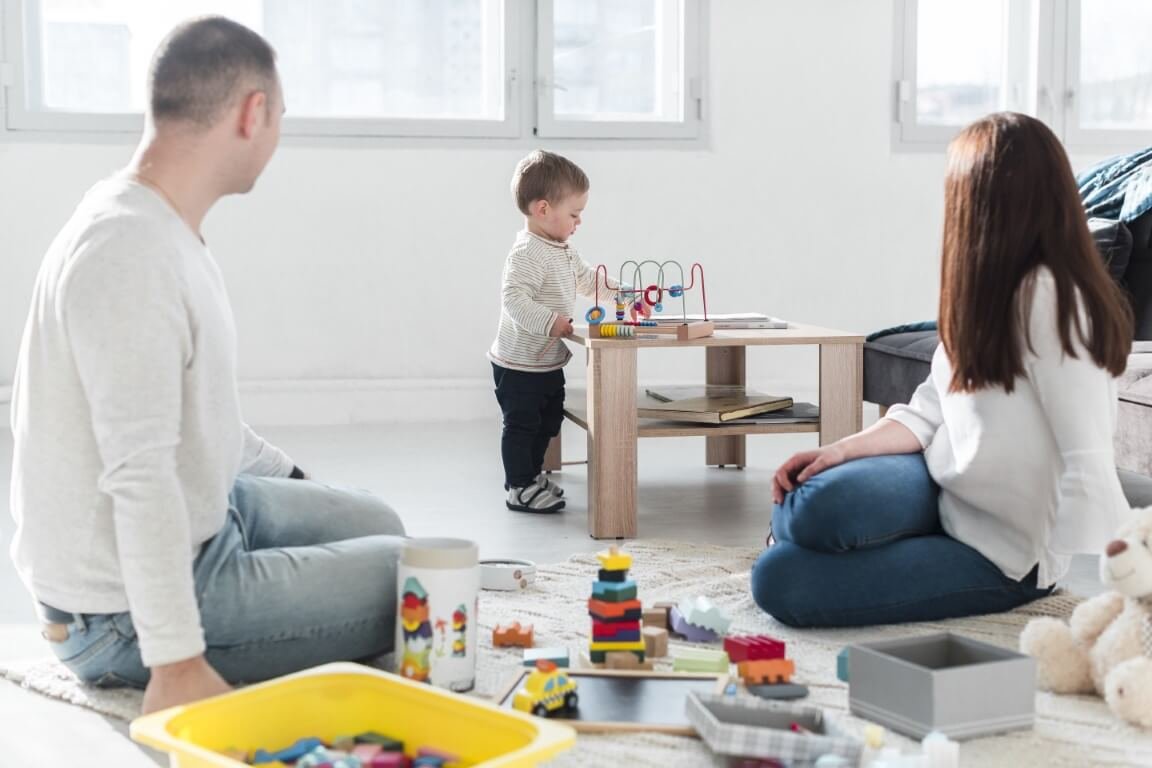
The evaluation session is divided into three sections:
Every child is unique, so each child’s needs are different, and the treatment plan will be different for each case. The pediatric occupational therapist will review the child’s medical history and discuss any concerns the parents may have about their condition. The child’s skills will be assessed through a combination of standardized tests and assessments and by monitoring the child’s response through play and during functional activities.
- The specialist begins by assessing the child’s condition, the skills he can master, and the skills that need training and improvement, and then sets goals and intervention plans to work on in the upcoming treatment sessions.
- To develop a treatment plan, the occupational therapist will use several approved tests and assessments, including:
- Activities of daily living: such as putting on and taking off clothes and shoes, eating with hands or using cutlery, where the child's independence in performing tasks is assessed.
- Fine motor skills: such as coordination in using the hands, and holding small objects such as a pen or scissors.
- Gross motor skills: such as overall body coordination during motor activities such as throwing a ball or jumping.
- Sensory disturbances: such as hypersensitivity or hyposensitivity to environmental stimuli, such as smells, sounds, or touch.
- Sensory motor skills: The child is assessed through play and observation of his use of toys and his control over them.
After the assessment, parents are interviewed to ask how independent and self-reliant the child is in daily activities such as eating, brushing teeth, dressing, using the bathroom, and getting ready for bed. Communication and behaviors such as crying or clapping are also discussed in order to develop an appropriate treatment program.
At the end of the session
The occupational therapist will provide an analysis and treatment plan, and recommend appropriate treatment options, whether individual sessions, intensive sessions, or teletherapy, depending on the child's condition and family circumstances.









